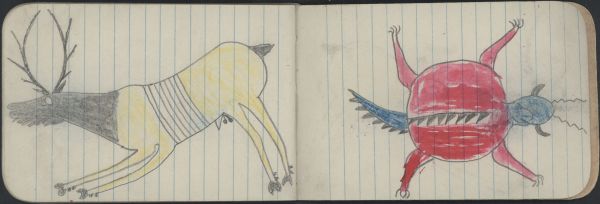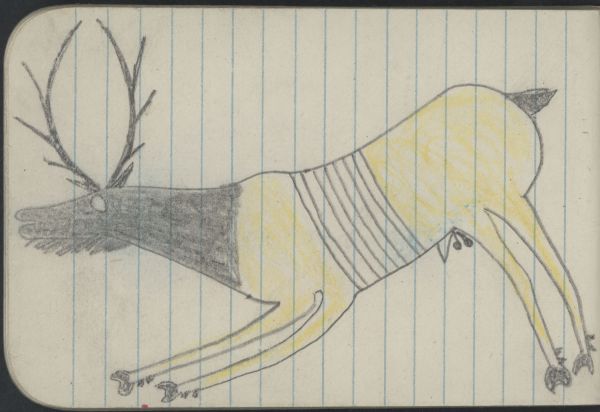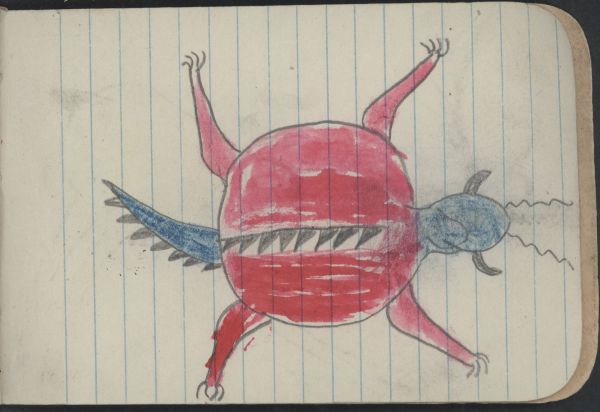ANIMAL, ELK; ANIMALS, TURTLE
Ethnographic Notes
76 A bull elk with striated ribs runs from right to left across the page (extended legs show motion). He has dark shoulders and yellow body. He has a rack of antlers (four by four points), and his round eye is created by an outlined circle of unpigmented paper, contrasting with the dark hide around it. Penciled details include antlers, ears, beard, split hooves, dewclaws, genitalia, ribs, and tail. In other ledgers, elk do not have such detailed ribs (Petersen, 1983: 277; Keeling Ledger, PILA plate 5, Nebraska State Historical Society 11310-55). The alteration of an animal can indicate intention, especially seen in name glyphs. For example, the name glyph for Lean Bear is a bear with a constricted midsection (Cheyenne Dog Soldiers: A Ledgerbook History of Coups and Combat, Afton et al., 1997: 323). Composition of the drawing resembles the same right-to-left, full-page orientation of human warrior portraits. Twelve nearly identical images of this male elk appear in this ledger (plates 19-23; 30, 32, 37-41). See further discussion for plate 19. 77 A red snapping turtle with blue tail and head is one of the most unusual images in the 1879 Northern Cheyenne Dodge City ledgers. The head has buffalo horns and spirit lines extending from its head. is a snapping turtle, which has both realistic and supernatural attributes. The animal is seldom represented in Cheyenne ledgers or other media; but examples are on a few surviving shields, including one held by the Colorado State Historical Society in Denver (c 1860-1880) (Afton et al., 1997: 268). The turtle�s serrated back and tail indicate the snapping turtle species, as well as clawed feet. According to George Bird Grinnell, snapping turtles were a food source to Southern Cheyennes (The Cheyenne Indians, Their History and Ways of Life, 2 vols., New Haven: Yale University Press, 1923: 161-67). The blue head has horns and two lines of energy radiating from the skull, which are representative of Cheyenne spiritual images. The other animals in the ledger notebooks appear to be realistic, without spirit lines or other supernatural variations. The same turtle being appears in the Wild Hog ledger of the Schoyen Collection, one of the four known ledgers from 1879 and Dodge City (PILA plate 27). There it is a drawing on a tipi, blue instead of red, but with four distinctive claws, ridged back, and spirit lines from the head.


